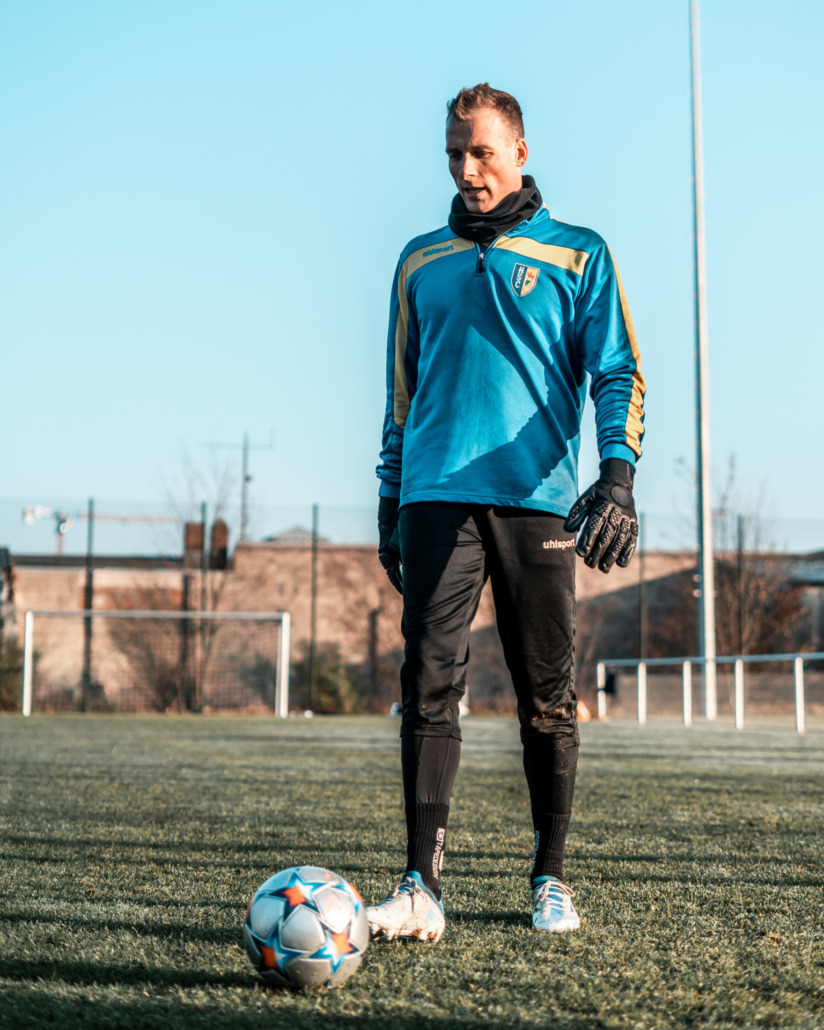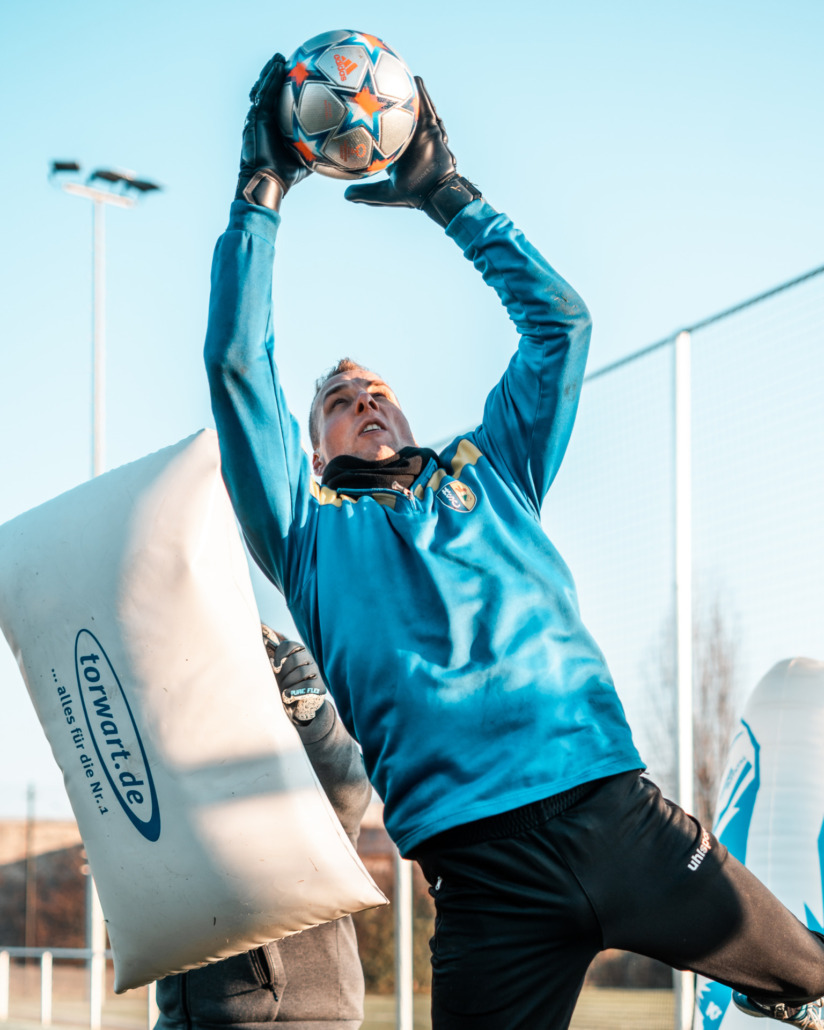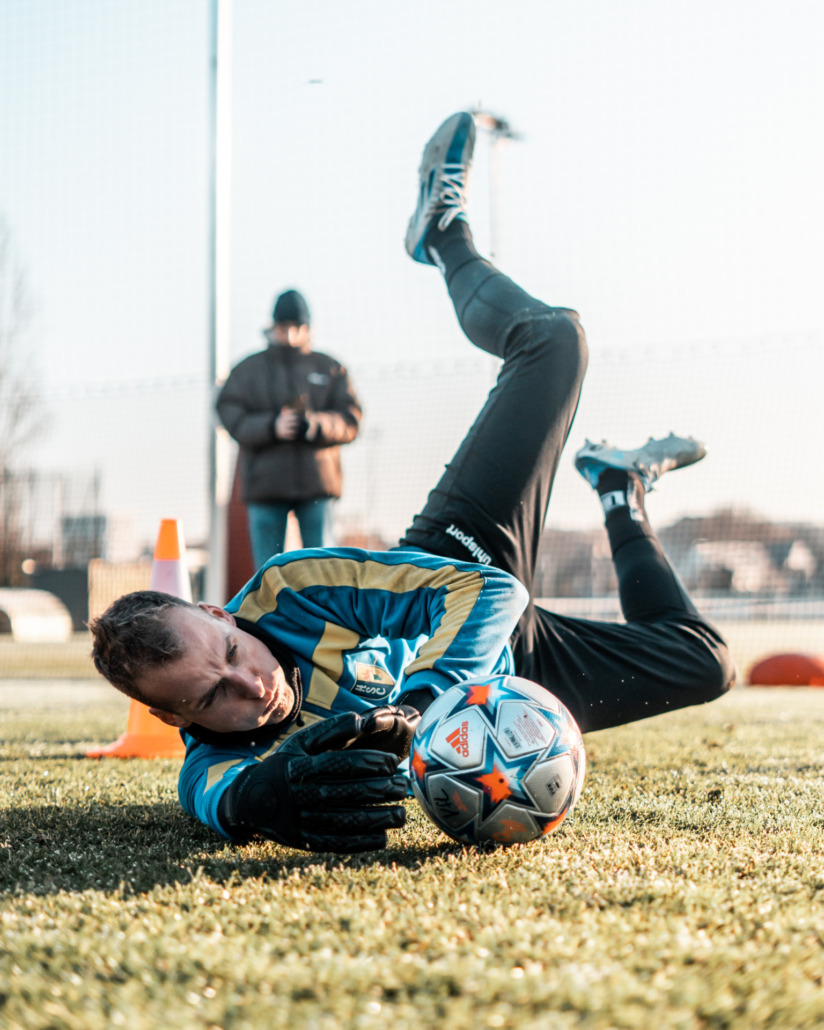Football Training in Winter – Tips and Tricks

Preparation for Winter Training
Warm-up exercises in low temperatures:
Cold temperatures with snow and ice can make the muscles stiffer, making careful warm-up essential. Start the training with dynamic warm-up exercises to promote blood circulation and prepare the joints for the strain. Stretching exercises should not be neglected to improve flexibility and minimize the risk of injuries. Always remember that caution should be exercised during football training in cold temperatures.
The right football clothing in winter:
Selecting the appropriate football winter clothing and equipment is particularly important in cold temperatures. Players should dress warmly to avoid hypothermia. Thermal underwear, waterproof layers, and windproof materials can help protect the body from the elements.
Gloves, hats, and warming socks also contribute to regulating body temperature. Most heat is lost through the head and exposed extremities.
Careful preparation for winter training lays the foundation for successful and safe training sessions. Players who are warm and well-equipped can better focus on the actual training and get the most out of each session.
After training, it is advisable to change into dry and warm clothing immediately. A warm shower also helps to reheat the body.
HERE you can find football clothing for winter!
Training Exercises in Winter Conditions
Winter conditions necessitate an adaptation of training exercises to ensure both safety and effectiveness. Here are some key aspects for adjusted training exercises for winter and football in the snow:
Focus on Technique and Ball Control:
In the cold months, the ball on the field can react unpredictably. Therefore, it makes sense to focus training more on technique and ball control. Exercises that require precise passing, dribbling, and ball reception help players refine their skills under challenging conditions.
Tactical Exercises for Winter Conditions:
Adapting tactical exercises is crucial to maintain the team’s strategic orientation. Emphasize plays that can be successfully executed on slippery surfaces. Tactical discipline and quick decision-making remain key factors for success, regardless of external conditions.
Avoidance of Exercises with Increased Injury Risk:
Consciously avoiding exercises that could lead to injuries in slippery conditions is of great importance. Jumps, rapid changes of direction, or abrupt movements may need to be reduced or modified to minimize the risk of injuries.
Adapting training exercises for football in winter is not only a necessity for the safety of players but also provides an opportunity to refine fundamental skills.
Football players can enhance their performance and prevent injuries by focusing on winter conditions.
Indoor Alternatives
When ice and snow make the football field unplayable, training can be shifted indoors. Here are some considerations and advantages of indoor alternatives for football training in winter:
Utilization of Halls or Indoor Facilities:
Indoor facilities provide a protected environment where training can take place regardless of external weather conditions. The playing field may be smaller than outdoors, but training can be conducted without the risk of slipping.
Indoor Exercises for the Same Training Effects:
Indoor training opens up possibilities for specific exercises that achieve the same training effects as outdoor exercises. Technical training, ball control, and even tactical exercises can be carried out in an indoor setting. One can focus on passing, quick ball reception, and precise shooting to sharpen players’ skills.
Having access to an indoor facility allows you to bypass training in slush, ice, or frost, thereby avoiding the risk of injury.
Motivating Players in Winter
In winter and bad weather, player motivation can wane. Here are some strategies to keep player motivation high during the winter:
Integration of Games and Fun Elements:
Incorporate games and fun-oriented elements into training to lighten the mood. Competitions, small tournaments, or other playful exercises can motivate players and shift the focus away from adverse weather conditions.
Emphasize Positive Reinforcement and Team Spirit:
Use positive reinforcement to encourage players and acknowledge their efforts. Team spirit plays a crucial role in maintaining morale. Shared goals and team support motivate players even in inclement weather.
Variety in Training:
Vary the training routine to avoid monotony. New exercises, different focuses, and sometimes creative drills can motivate players and keep them interested.
Communication about Goals and Progress:
Hold regular discussions about short- and long-term goals. Sharing progress and emphasizing achievements can inspire players to continue putting in effort, even when the weather is not optimal
Conclusion:
Winter football training presents its challenges, but players can still perform well during the cold season. Careful preparation and adaptation of training methods are crucial in this regard.
The importance of thorough warm-ups and the use of appropriate clothing and equipment has been emphasized to prevent injuries. Specific exercises focusing on technique, ball control, and tactics are important to enhance players’ skills despite challenging conditions. By incorporating indoor alternatives and maintaining motivation and team spirit, players can train successfully and stay committed even in the cold season.



